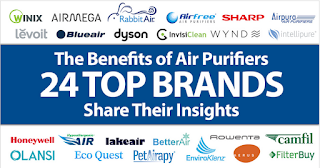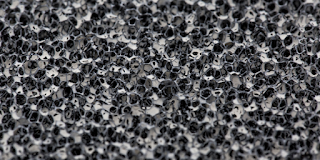Olansi Air Purifiers benefit– 24 Top Brands
1. Remove indoor PM2.5, pollen, hair and other foreign objects
First, compare the air purification efficiency of the filtration process. Passive adsorption purification air purifier adopts the fan + filter mode for air purification, and wind flow of air will inevitably lead to blind spots.
Therefore, most of the passive air purification can only produce certain purification around the air purifier. The effect is that it will take a long time to filter the indoor air all over again, and it is difficult to have an effect on the purification of the entire indoor environment.
Active air purification uses the diffuse characteristics of air to reach the air purification in every corner of the air. The air can be diffused to the place where it can produce purification effects.
Anion air purifiers were compared to find that, after releasing negative ions in the air, negative ions can take the initiative to attack, find pollution particles in the air, and agglomerate and actively settle them. From this point alone, active air purification has obvious advantages.
2. Removes dust
The second is to compare the removal effects of small-particle air pollutants. The most harmful air pollutants to humans are fine particles with a diameter less than 2.5 μm (ie, PM2.5, which is medically called lung particulate matter).
Through experimental research, it has been found that for PM2.5 and other small particles, the passive purification mode is powerless, and PM2.5 and other small particles can easily penetrate through the filter, activated carbon and other substances, and re-enter the air to harm human health.
The comparison of the negative ion air purifiers based on the principle of active purification to air purification shows that small particles of negative ions in the air can not only easily remove large particles in the air, but also it is difficult for the air purifier to have a diameter of less than 0.01.
Removed particulate fly dust has a 100% settlement removal effect. Imitating Nature’s eco-level negative ion generation technology has been introduced, its characteristics are small particle size, high activity, with its excellent diffusion and health effects to achieve better air optimization.
3. Sterilization
Finally, a comparative analysis of the quality of air treatment. The study found that under the principle of passive air purification if the filter pore size is small enough for the purpose of air treatment can only achieve the purpose of purification, that can only get “clean” air; while the negative ion air purifier is different, not only able to effectively remove particulate contaminants in the air, decompose harmful gases such as formaldehyde, provide clean air to the indoor environment, and provide air-negative ions that are highly effective for human convalescence and health care to the indoor environment, so that indoor air quality can reach “healthy air” standard.
more information,please visit www.olansigroup.com
melody@olansigroup.com
mob:+86 138 2478 4081
First, compare the air purification efficiency of the filtration process. Passive adsorption purification air purifier adopts the fan + filter mode for air purification, and wind flow of air will inevitably lead to blind spots.
Therefore, most of the passive air purification can only produce certain purification around the air purifier. The effect is that it will take a long time to filter the indoor air all over again, and it is difficult to have an effect on the purification of the entire indoor environment.
Active air purification uses the diffuse characteristics of air to reach the air purification in every corner of the air. The air can be diffused to the place where it can produce purification effects.
Anion air purifiers were compared to find that, after releasing negative ions in the air, negative ions can take the initiative to attack, find pollution particles in the air, and agglomerate and actively settle them. From this point alone, active air purification has obvious advantages.
2. Removes dust
The second is to compare the removal effects of small-particle air pollutants. The most harmful air pollutants to humans are fine particles with a diameter less than 2.5 μm (ie, PM2.5, which is medically called lung particulate matter).
Through experimental research, it has been found that for PM2.5 and other small particles, the passive purification mode is powerless, and PM2.5 and other small particles can easily penetrate through the filter, activated carbon and other substances, and re-enter the air to harm human health.
The comparison of the negative ion air purifiers based on the principle of active purification to air purification shows that small particles of negative ions in the air can not only easily remove large particles in the air, but also it is difficult for the air purifier to have a diameter of less than 0.01.
Removed particulate fly dust has a 100% settlement removal effect. Imitating Nature’s eco-level negative ion generation technology has been introduced, its characteristics are small particle size, high activity, with its excellent diffusion and health effects to achieve better air optimization.
3. Sterilization
Finally, a comparative analysis of the quality of air treatment. The study found that under the principle of passive air purification if the filter pore size is small enough for the purpose of air treatment can only achieve the purpose of purification, that can only get “clean” air; while the negative ion air purifier is different, not only able to effectively remove particulate contaminants in the air, decompose harmful gases such as formaldehyde, provide clean air to the indoor environment, and provide air-negative ions that are highly effective for human convalescence and health care to the indoor environment, so that indoor air quality can reach “healthy air” standard.
more information,please visit www.olansigroup.com
melody@olansigroup.com
mob:+86 138 2478 4081


评论
发表评论